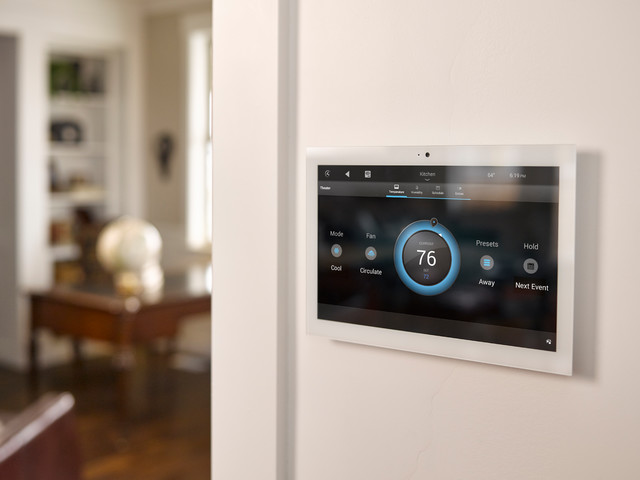In today’s world, smart home technology is becoming increasingly popular. From controlling the lights with your voice to managing your thermostat remotely, smart devices offer a wide range of benefits, including convenience, energy efficiency, and security. However, many people assume that making your home “smart” requires a hefty investment. The good news is that you can turn your home into a smart home without breaking the bank. In this blog post, we’ll explore practical ways to make your home smart on a budget.
1. Start with a Smart Hub or Assistant
One of the easiest and most affordable ways to introduce smart technology into your home is by setting up a smart hub or assistant. A smart hub acts as the central command for your smart home devices. Popular options include Amazon Alexa, Google Assistant, and Apple HomeKit. These systems allow you to control a variety of smart devices with voice commands or through an app on your phone.
If you already own a smart speaker like an Amazon Echo or Google Nest, then you’re halfway there! These devices can serve as your hub, controlling lights, locks, thermostats, and more. If you don’t have one yet, you can often find these devices on sale or even refurbished for a fraction of their original price. Alexa and Google Assistant, in particular, are budget-friendly and offer many functionalities without costing much.
2. Smart Lighting Solutions
Smart lighting is one of the most cost-effective ways to make your home smart. You don’t need to replace every lightbulb in your home to enjoy the benefits. Start with a few key areas where smart lighting can make a big difference—like your living room, kitchen, or bedroom.
Affordable smart bulbs like Philips Hue, Wyze, or Sengled offer a range of colors and can be controlled through your voice, phone, or via automation. These smart bulbs can be scheduled to turn on or off at specific times, dimmed according to your mood, or set to change colors to create the perfect ambiance. Best of all, you can control them even when you’re not at home, which adds an extra layer of convenience and security.
If you’re looking for even more savings, smart plugs are another budget-friendly option. By plugging regular lamps or appliances into a smart plug, you can control them remotely and schedule them to turn on and off automatically.
3. Upgrade Your Thermostat
Heating and cooling are typically two of the highest costs in your monthly utility bills. Upgrading to a smart thermostat is a great way to save money in the long run while making your home more energy-efficient. With a smart thermostat, you can adjust the temperature remotely and set it to automatically adjust based on your preferences and schedule.
Affordable options like the Google Nest Thermostat and the Wyze Thermostat offer many of the same features as their higher-end counterparts, such as learning your schedule, providing energy-saving recommendations, and offering remote control through an app. By learning your habits, these thermostats optimize your heating and cooling systems, helping you save money on your energy bills.
4. Enhance Your Security with Smart Cameras and Doorbells
Security is a top priority for any homeowner, but traditional security systems can be expensive. Thankfully, there are affordable smart security cameras and doorbells that don’t cost a fortune but still provide peace of mind.
Smart doorbells like Ring or Wyze allow you to see and speak to anyone at your door, even if you’re not at home. These devices can alert you to visitors or potential intruders, making them an affordable way to boost your home’s security.
Additionally, smart security cameras are another great way to monitor your home on a budget. Cameras like Wyze Cam or Blink are relatively inexpensive and offer features like motion detection, night vision, and two-way audio. These cameras can be set up both indoors and outdoors, so you can keep an eye on everything from the front door to the backyard.
Many of these smart cameras offer free cloud storage for a limited time or have low-cost subscription plans for extra storage, which makes them even more budget-friendly.
5. Get Smart with Home Security Locks
While adding a smart lock to your door may seem like an extravagant expense, it’s actually one of the most affordable upgrades you can make. A smart lock lets you control access to your home with a smartphone app, key fob, or voice commands. No more fumbling for keys when your hands are full or worrying about losing your spare key.
Smart locks like the August Smart Lock and Wyze Lock are budget-friendly options that integrate well with other smart devices like Alexa and Google Assistant. They offer features like remote locking and unlocking, guest access, and even the ability to check your door’s status from anywhere. With a smart lock, you’re not just improving security; you’re also making your life more convenient.
6. Smart Plugs and Switches
Smart plugs and switches are some of the most affordable and versatile ways to make your home smarter. These devices allow you to control anything plugged into them from your phone or through voice commands.
For example, you can plug in lamps, fans, or other small appliances, and control them remotely from your smartphone or voice assistant. They can also be programmed to turn on or off based on a schedule, which can help you save energy by ensuring devices aren’t left on unnecessarily.
See here now how easy it is to set up and integrate these devices with your current smart home system. Smart switches replace your traditional light switches and offer similar functionality. For a few dollars more than smart plugs, you can automate entire light fixtures or ceiling fans.

7. DIY Smart Home Automations
One of the best ways to get the most out of your budget smart home is by creating automations. Many smart devices, such as lights, thermostats, and cameras, offer built-in automation features that let you control multiple devices at once based on a trigger.
For example, you can create a “Good Morning” routine that turns on your lights, adjusts your thermostat, and starts playing music when you wake up. Or set up an “Away Mode” that turns off lights, locks doors, and adjusts the thermostat when you leave the house.
By leveraging automation, you’ll maximize the functionality of your devices and enhance your home’s convenience—all while keeping costs low.
8. Shop for Deals and Refurbished Devices
When shopping for smart home devices, always be on the lookout for deals. Many retailers offer discounts during holiday sales or on Prime Day and Black Friday. Shopping for refurbished or open-box items can also help you save a significant amount of money while still getting a high-quality product.
Refurbished devices are typically tested and restored to like-new condition, so you can often find excellent deals on them. Websites like Amazon, Best Buy, and Walmart offer refurbished smart home products, so make sure to check those options before buying new.
Final Thoughts
Creating a smart home on a budget is not only possible but also quite simple with the right approach. By starting small with affordable devices like smart bulbs, plugs, and thermostats, you can build a smart home that offers convenience, security, and energy savings without breaking the bank.
Remember, you don’t need to buy everything at once. Instead, focus on upgrading one room or one function at a time, and always look for sales or refurbished options to save even more. With a little planning and some savvy shopping, you can make your home smarter and more efficient without emptying your wallet.

